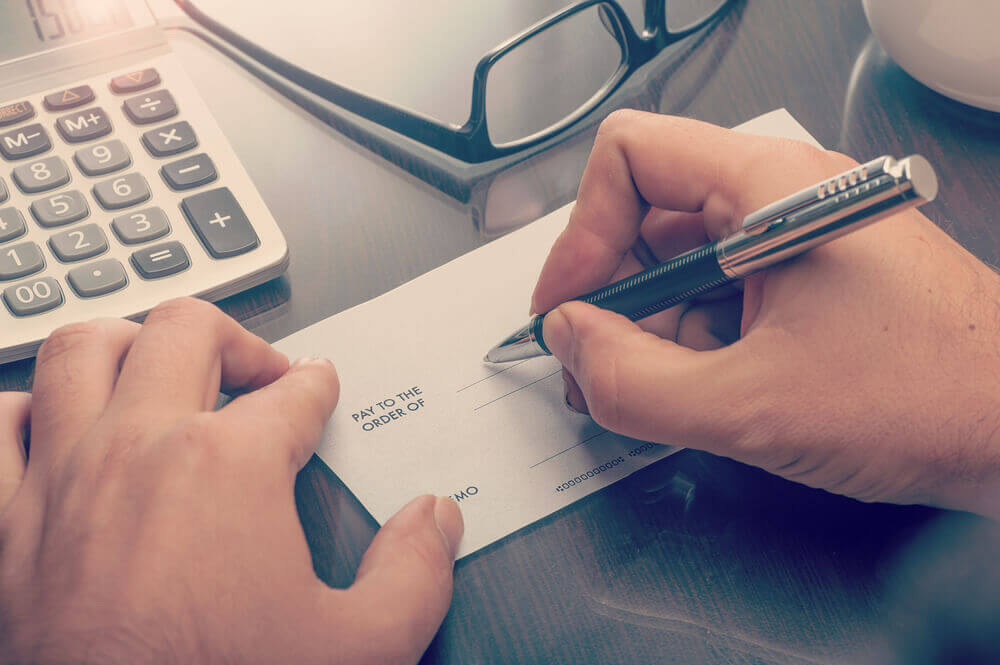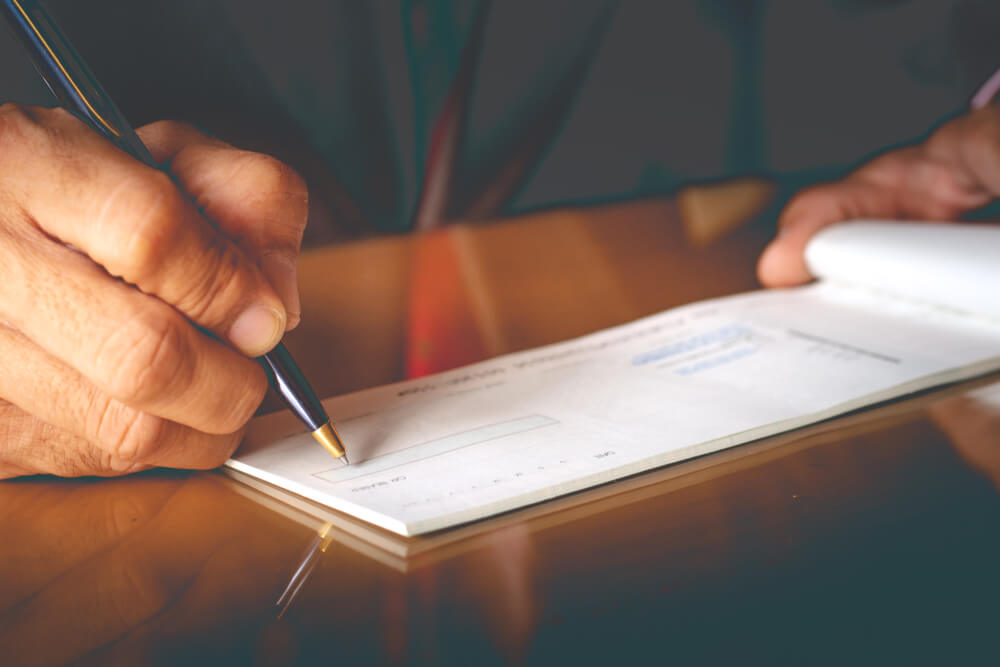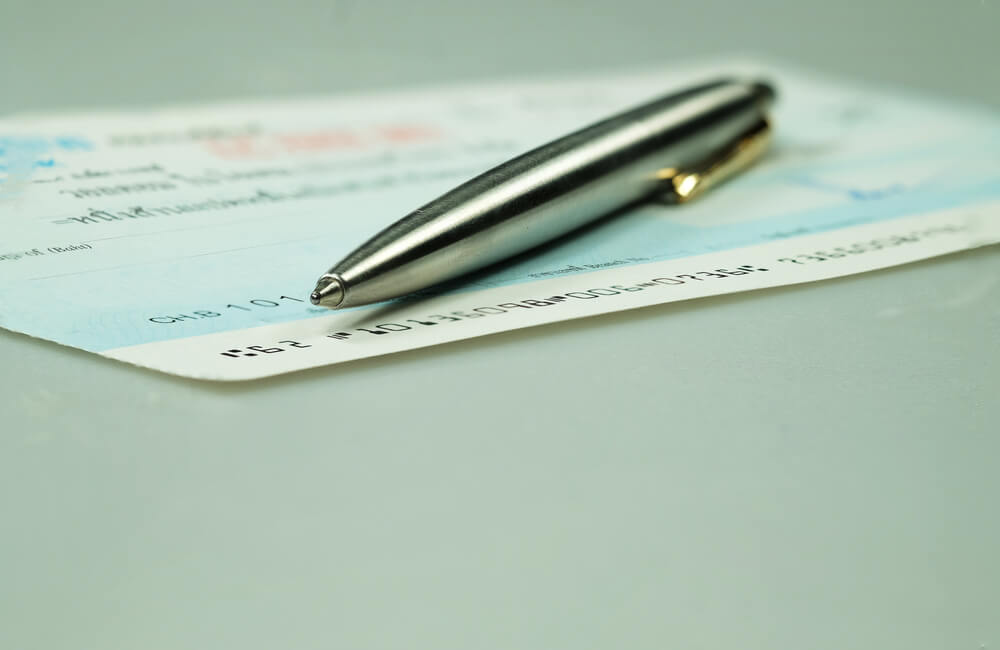In this day and age, handwritten checks might seem like antiquated financial technology. However, there are occasions when nothing else will do. For example, your apartment manager is unlikely to accept cash payments. Venmo is also unlikely to make the cut. So, it’s still important to know how to write checks by hand, although it might seem old-fashioned. If you need to brush up, read the rest of this article for an explanation on how to get through it. If it’s really too much for you, consider the consultation of check writing companies, for whom check writing services are the stock in trade.
The Anatomy of a Check
Let’s begin with the anatomy of a check. On the top of the check, you will see a field that says, “Pay to the order of.” Below it, on the right side of the check, you will see a small box with a dollar sign next to it. Don’t write your own; the one provided will do just fine. To the left of this box is a longer one, where you will spell out the dollar amount on your check. The tricky part of this field is knowing how to write cents on a check. Below this larger field are two additional fields. The one to the left is for memos. The one to the right is where you sign your name.
Now let’s examine each of these fields in detail.
Pay to the Order Of
In the field marked “Pay to the order of,” write the name of your recipient fully. Make sure that you spell it correctly and that the name of the recipient is the one linked to the bank account where you will deposit the check. To figure out details like this is simple. All you have to do is ask your recipient to whom the check should be written out.

The Numeric Amount
In the field indicating a numeric amount, write the dollar amount in decimal form. Make sure that you leave two trailing decimal places, even if it is a round number (with no cents indicated). It’s a matter of form rather than math. Make sure that you write legibly, as this is the first part of the check that the ATM’s OCR technology will verify, if that’s how it’s deposited. That’s all there is to this part of the form.
The Written Amount
The next part is a little trickier. In the long field indicating a written amount, you will have to take consideration of the format usually used to write numbers out. It’s not hard, but it takes a little bit of practice. Here are the rules that you’ll have to keep in mind:
- If it is an amount less than 20, simply write that number out. Forget cents for a moment; we’ll return to them later.
- If it is a number higher than 20, you may have to use a hyphen. Here are a few examples: a) Twenty-two b) Fifty-seven c) thirty-five.
- If the amount of your check is higher than 100, do NOT write an additional “and” between the hundreds and the tens. For example, the following are correct: a) One hundred thirty-six b) Four hundred seventy-two c) Eight hundred ninety-one.
You can adapt the above rules for whatever amount you have to pay out. To take an example of a very high amount, consider a number like 3,457,120,486. You would write this as “Three billion four hundred fifty-seven million one hundred twenty thousand four hundred eighty-six.” Notice the pronounced absence of the word “and” here; there is a good reason for it.
Writing Cents on a Check
The issue of how to write cents on a check is less difficult than it might seem. To add cents to your check, you will finally make use of the word “and.” Place it after the dollar amount, followed by the cent amount in fraction form. It’s useful to think of the cent amount as an actual percentage for this. For example, you could write thirty-two cents as 32/100. Note that at this point we have returned to using decimal notation rather than expansively writing the amount out. If this is really tricky, consider finding check writing companies to help you.
Full examples
Here are a few more examples for the full amount of a check. To use a real-world example, imagine you’re at a coffee shop. The amount you need to pay is $2.80. If the café accepts checks, you would write this amount as “Two and 80/100.”
You will notice that the words “dollars” and “cents” are never used on the written field. Just the written amount will do fine. Anything else is frill.
One final note on the written portion of a check. After writing the full amount, if there is space left in the field, you might strike it out with a straight horizontal line. This is normal, but not necessary.

Memos
Let’s continue to examine the remaining fields. There is a field to add a memo to your check. If you’d like, you can fill it out to remind yourself what the check was for. On your imaginary check spent at the café, you might have written simply, “coffee,” and that would suffice when you went back to balance your checkbook. This can also be handy for your friends. For example, if you had written a check for someone else to deposit to their coffee fund, the same “coffee” memo would be useful.
Signing Your Check
The final field is perhaps the most important, but it also allows for a certain amount of personal creative expression. This is the signature field. Sign your check with your name, and do it consistently with your signature on other official paperwork if possible. This identifies you as the issuer of the check. If something goes wrong, they might consult this field to verify that you actually wrote it. So, you probably shouldn’t get too carried away on the dotted line, although as already mentioned, you have a certain amount of creative freedom with your own handwriting. Legitimate check writing services will still ask you to fill out this part of the form.
Voiding a Check
There’s only one issue left to cover when it comes to writing a check. If you’ve made a major mistake in one of the fields on your check, you may need to void it to make sure that no one tries to deposit it erroneously. To void a check, simply write the word “VOID” in such a way that it covers all the fields on the check, and then once more in a blank space where you can clearly see it. This way, you obviously can’t deposit it.
That’s the long and short of writing checks. Was it helpful? You might want to practice on your own before you try to send money to anyone if you’re rusty, or if you’ve never done it before. You can also compare your form to images of checks on the internet and practice by using a blank piece of paper. Before long, you’ll see that it’s really not rocket science. Soon enough it will become second nature. If it’s still a bit much to handle, call our team at CheckIssuing today.
